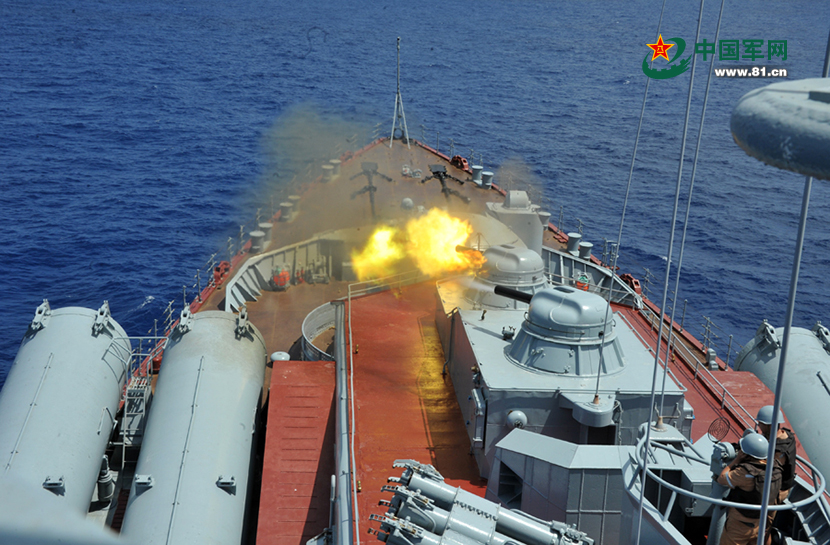

The Chinese and Russian navies held a set of naval exercises, Joint Sea Drill 2015, from May 11 to 21. The ten day exercises are the fourth Sino-Russian naval drills, this time taking place in Russia’s backyard, at the eastern Mediterranean, instead of the usual Pacific waters closer to China. The exercise took place between the coasts of Cyprus and Turkey.

Type 054A Jiangkai II frigates 547 Linyi and 550 Weifang, accompanied by the Type 903 replenishment ship Weihanhu 887, first visited the Russian Black Sea port Novorossiysk for May 9th VE Day celebrations. The Russian hosts provided the lions share of the warships, including the Slava class and Black Sea Fleet flagship Moskva cruiser the Burevestnik-class frigate Ladny, the Bora-class missile hovecraft Samum, and two Ropucha class landing ships.

The focus of Joint Sea Drill 2015 is focused on joint navigation, at sea resupply, escort mission and live fire exercises. The Weihanhu’s presence is notable because by refueling and resupplying Russian warships, it would lay the ground work for Russian ships in distant waters, such as the Horn of Africa, to be resupplied by their Chinese counterparts. The live fire exercises involved anti-air, anti-ship and anti-submarine warfare. More interestingly, Chinese and Russian marines conducted boarding exercises on hostile ships, presumably for anti-piracy and counter-proliferation missions.

The Joint Sea Drills are part of a larger pattern of tightening cooperation between China and Russia. On land, the Peace Missions have seen the members of the Shanghai Cooperation Organization (China, Russia and other Central Asian states) conduct drills with frontline tanks, high-tech fighters, armed drones and thousands of soldiers. China and Russia have also recently signed over thirty agreements for mutual strategic goals in areas like cybersecurity, oil, natural gas pipelines and banking. As Sino-Russian aerospace joint ventures like jumbo jetliners and heavy cargo helicopters increase, Chinese naval technology like the Type 071 amphibious warfare landing platform dock could be future area of cooperation, for sections of Russian naval capacity that no longer have access to western systems.

More specifically, this deepening in Sino-Russian naval cooperation serves both Beijing and Moscow in psychologically buttressing their respective positions in Eastern Europe and the South China Sea, both areas of heightened tensions recently.
You may also be interested in:
China Signs Huge Arms Deal with Russia, Buys World’s Best Missile
China and Russia Join Forces to Build New Jumbo Jet
China Joins the Tank Biathlon, the “Sport” of Main Battle Tanks
The Bear and Dragon Go to Sea Again: Russian and Chinese Navies’ Joint Sea Drill 2014
US and China Trade Naval Expertise at RIMPAC 2014 Wargames
Chinese Special Forces Take 1st, 2nd and 4th Place at ‘Olympics’ for Elite Warriors
